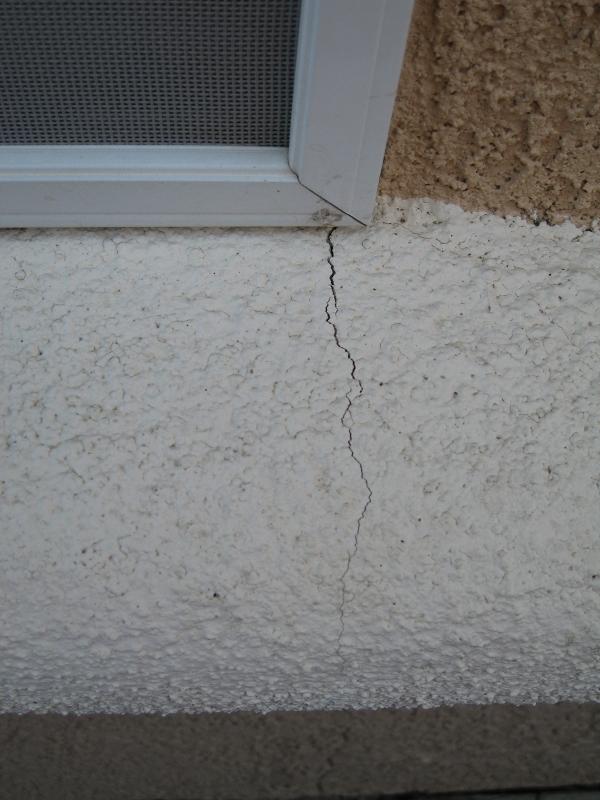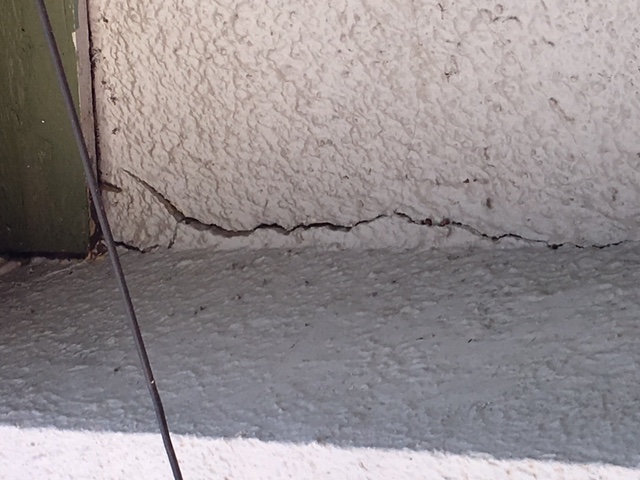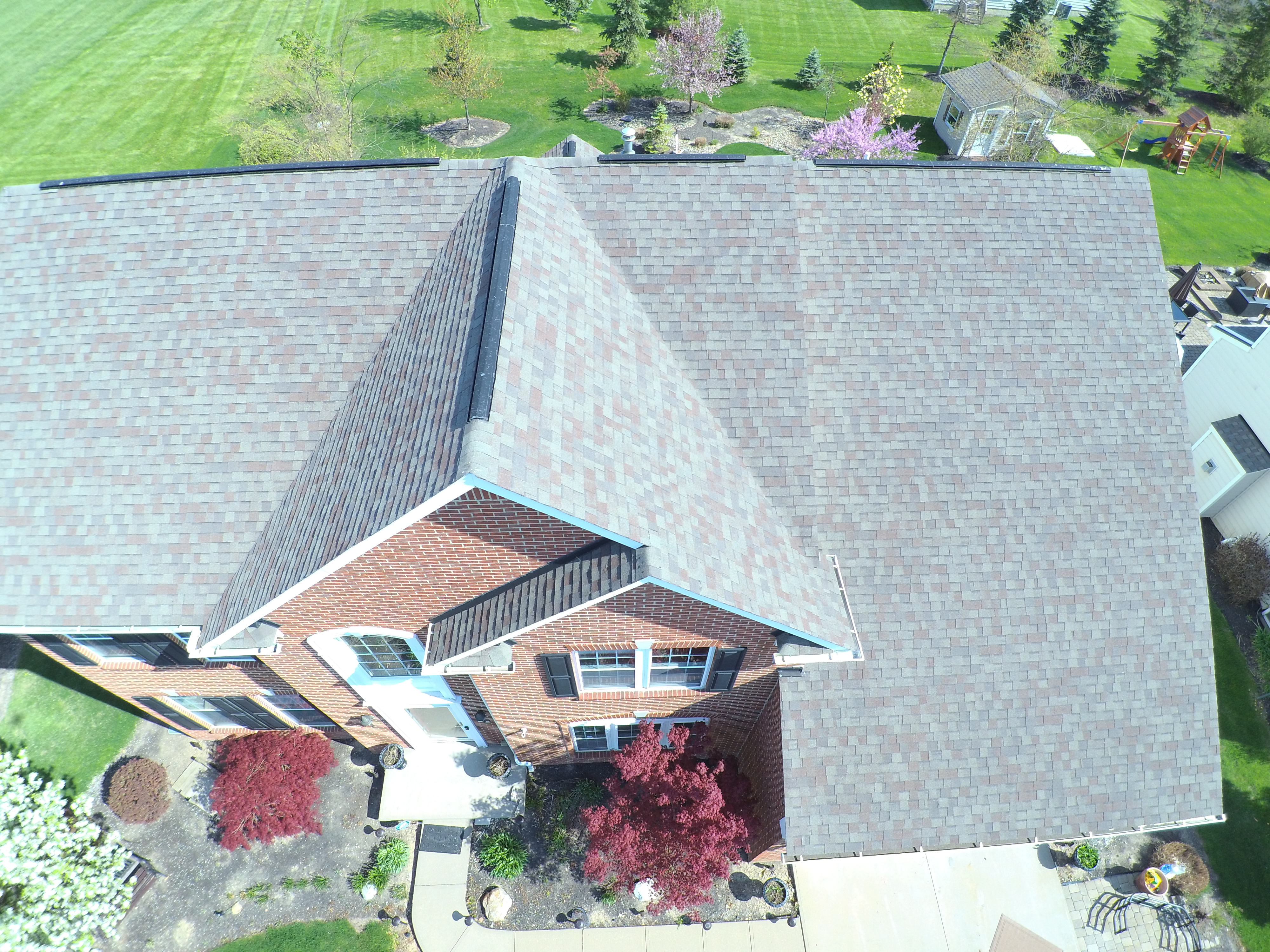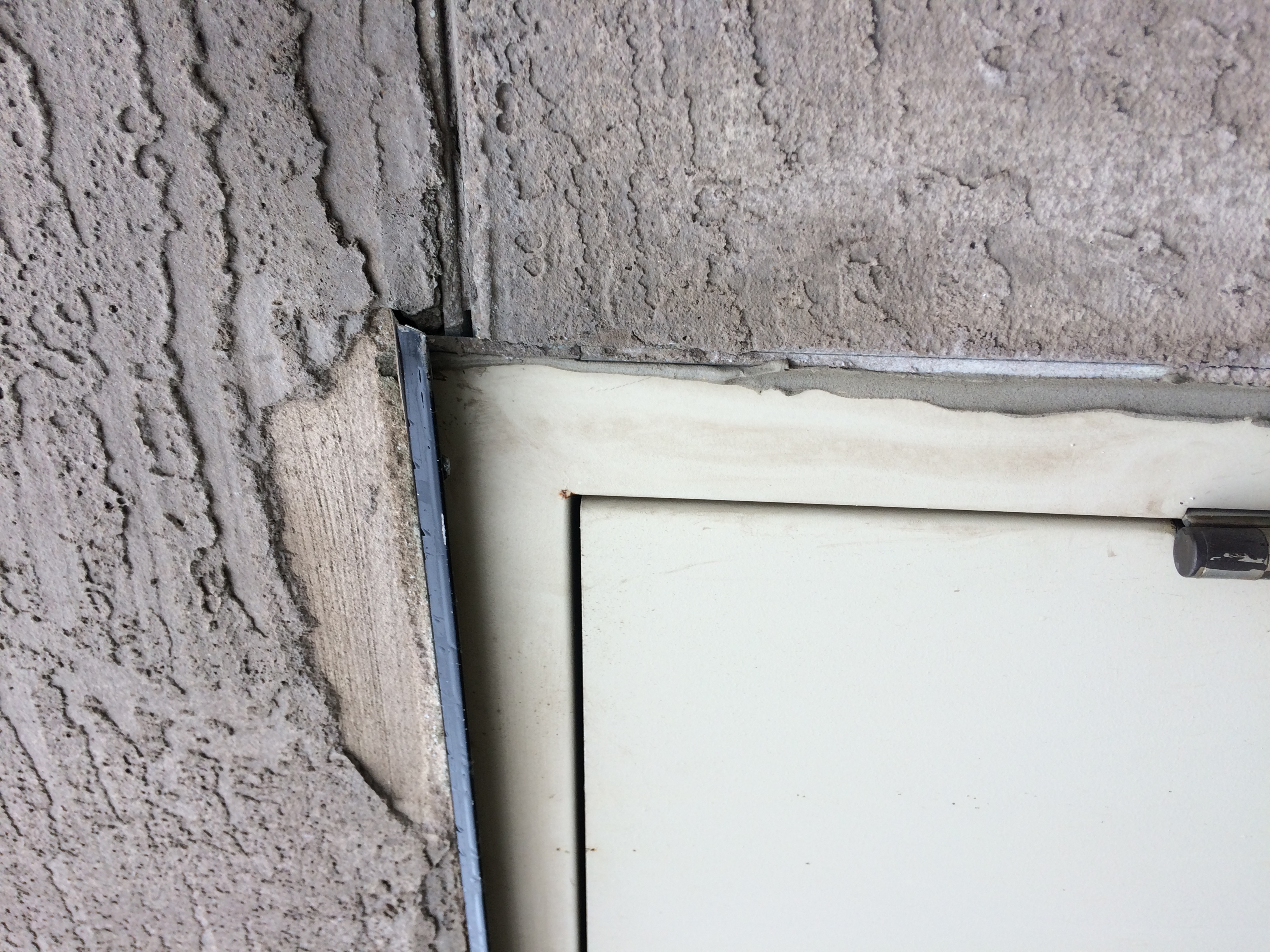In a picture, found in InterNACHI gallery, an image shows a Synthetic Stucco EIFS with a moisture sensitive substrate (OSB). PB EIFS are the most common type of EIFS. Similar to that of Moisture Drainage EIFS except that the moisture barrier and drainage plane is first placed over the moisture sensitive substrate. Some key things to look at to identify in PB EIFS clad homes are EPS foam insulation, fiberglass mesh, thin lamina (1/16inch), sounds hollow and is typically adhesively attached to a substrate.
I looked into EIFS to better understand how materials are applied. In this picture I noticed how the adhesive had ridges on it to allow for a moisture gap or barrier under the insulating board. Reinforcing mesh was applied over the insulating board.
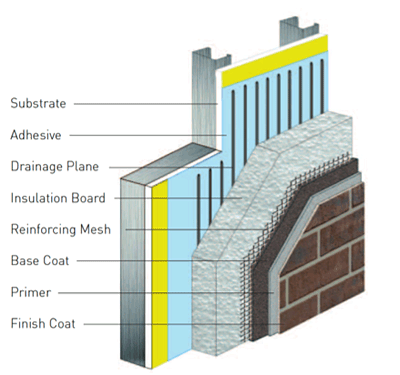
I looked into stucco applied over brick which appeared to be simpler design or installation method. Basically the brick wall was covered with an applied scratch coat and then the finish coat was applied over that. No fiberglass mesh was used.
This is a diagram of three-coat stucco. Three-coat stucco is a longstanding, nonproprietary cladding system that has a scratch, then base, then finish coat, resulting in a 7/8-inch- to 1-inch-thick cladding. This system is the most time and labor intensive.
I read the article on true preservation and repair of historic stucco. When repairing historic stucco it is recommended to square off the repair area to get a neater result. The repair area should not overlap the existing stucco area.
This is the written response for the inspection and writing assignment for the “Advanced Stucco & EIFS Inspection Training for Inspectors Course”. Pictured is MD EIF system. A MD EIF system is a moisture drainage EIFS, it allows moisture into the system and drains it out the bottom.
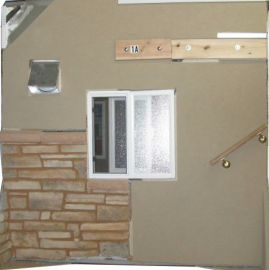
This is the written response for the research and writing assignment for the “Advanced Stucco & EIFS Inspection Training for Inspectors Course” I read the article titled “Exercise Equipment Dangers”
by Nick Gromicko. I learned that it is estimated that 25,200 children are injured each year on exercise equipment.
The WRB is part of the walls drainage plain. Incorrect installation, or too many penetrations into this material, will allow water to migrate into the wall and can lead to moisture intrusion, mold and microbial growth.
The wire supports the stucco when it is applied and helps to give it strength. Without the wire the stucco would fall off (or not stay on at all).
Composition of Historic Stucco
Before the mid-to late 19th century, stucco consisted primarily of hydrated or slaked lime, water and sand, with straw or animal hair mixed in as a binder. Natural cements were frequently used in stucco mixes after their discovery in the United States during the 1820s. Portland cement was first manufactured in the United States in 1871, and it gradually replaced natural cement. After about 1900, most stucco was composed primarily of Portland cement, mixed with some lime. With the addition of Portland cement, stucco became even more versatile and durable. No longer used just as a coating for a substantial material like masonry or log, stucco could now be applied over wood or metal lath attached to a light wood frame. With this increased strength, stucco ceased to be just a veneer and became a more integral part of the building structure.
Stucco inspection. The kick out flashing was missing and the stucco was showing signs of moisture getting behind the stucco. The wood trim board was deteriorated. The stucco was installed over a concrete ICF house. I observed numerous defects with the stucco.
Stucco has traditionally been popular for a variety of reasons. It was an inexpensive material that could simulate finely dressed stonework, especially when scored or lined, in the European tradition. A stucco coating over a less finished and less costly substrate, such as rubblestone, fieldstone, brick, log or wood frame, gave the building the appearance of being a more expensive and important structure
There is a crack in the Stucco wall on the east side of the house. While no stains are visible and no moisture was detected at the time of the inspection, this could potentially indicate problems in the wall system that are not visible. Also, a Stucco inspection may identify additional concerns not found during this visual home inspection. It is recommended that you have the Stucco inspected by an independent third party Stucco inspector.
Most Stucco deterioration happens because of water intrusion, either through the roof, through various wall penetrations or because of insufficient clearance from grade, etc. When deterioration has been identified, the building itself should repaired and any conditions allowing water penetration should be addressed before repairing the stucco.
Stucco
Stucco is a Portland and lime based product. For added strength and support we will sometimes mix bits of fiberglass strands in with the mud. The fiberglass acts as another structural support to make sure cracks stay away and no chunks will fall off. To add some fun texture, different types of sand are used in specific quantities to make sure you enjoy every inch of your home.
this is an overhead view of my roof through the eyes of my drone. I will be using my drone to take high resolution images of roofs that are either pitched too steeply or otherwise difficult to climb. The details that are available through a drone3 are amazing and go far beyond this single photo.
Determining which EIFS system or for that matter generally determining a stucco system is indeed a difficult task for any home inspector. In being new to this type of construction, I found its very difficult to determine the differences even when looking at the cutouts. Paractice will hopefully take care of this. I am also going to take the advanced stucco class to get more insights.
Water stains were noted at the corner of brick veneer and garage stucco wall intersection. Missing kickout flashing may cause the overflow to the stucco wall from gutter end. Water can seep into the stucco and cause rot on OSB/plywood sheathing. Recommend contact a qualified/certified stucco specialist to use invasive testing.
Missing caulks was noted at stucco and brick veneer wall intersection near front entrance. Water may seep into the stucco and cause OSB/plywood rot. Recommend contact a qualified/certified stucco specialist to further check using invasive moisture test. Invasive moisture testing of stucco is done by drilling holes in the stucco at suspect locations, sticking a moisture probe in to the wall, and measuring the moisture content of wall sheathing with a special moisture testing device.
This is a photo of the stucco meeting up with an exterior door. As you can see, there is proper flashing above the door. The base coat looks good, but the top coat is crumbling and falling off the wall. This is a a defect and should be noted in the inspection.
I read the article about Water Damage and EIFS. EIFS stands for exterior insulation and finish system. Synthetic stucco is foamboard and fibreglass mesh attached to a wall that is covered with a polymer-based material which is then textured to look like historic stucco. EIFS itself, blocks the movement of water and water vapour, not allowing the water to escape. It can lead to prolonged moisture intrusion and, eventually, the rotting of materials.

